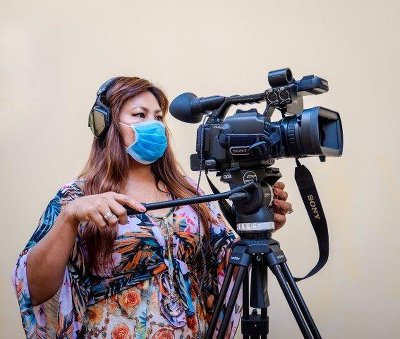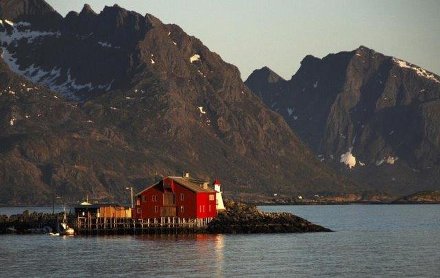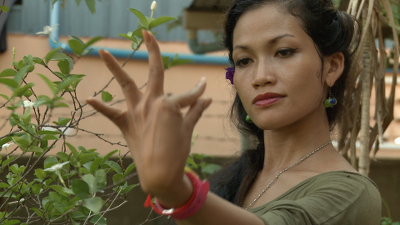In 2020, two pieces are awarded with the Prix Palma Ars Acustica: „PHNOM PENH FM: RE / DISC / OVER“ by Sopheak Sao, produced by ORF Kunstradio; and “Ror-bu” by Veronika Svobodová, produced by Cesky Rozhlas.
Prix Palma is an initiative by the radio art group Ars Acustica within the European Broadcasting Union EBU – each member is allowed to submit one work; the jury makes its decision at the annual Ars Acustia plenary gathering. In addition to a prize money of 2.000 Euro, the winning pieces are distributed throughout Europe via radio transmissions on the participating radio stations.
1) „PHNOM PENH FM: RE / DISC / OVER“ by Sopheak Sao

Forty years after the civil war and the genocide by the Khmer Rouge (1975-1979), Cambodia is slowly rising from its trauma. In the Vietnam War, the (neutral) country had got into the game of the great power nations, several decades of war threw it off course.
The art project re/dis/cover. Cambodia curated by Gertrude Moser-Wagner in Vienna, took up the theme, showed documentary films and artistic photography, touched upon traces of the unspeakable, and astonished with original ideas for coping with everyday life.
The sound collage of the Cambodian documentary filmmaker and DJ Sopheak Sao is based on a live recording from March 2019 of an evening at Meta House Phnom Penh. In collaboration with the German music producers Chris Zippel ('Genuine'), Jan Mueller (Prof. Kinski) and Meta House founder Nico Mesterharm.
Sao is concerned with the role of women in Cambodian society, from the legendary Apsara dancers depicted on the bas-reliefs of Angkor Wat's World Heritage Site, the farmers' wives in the rice fields, the child soldiers of the "Killing Fields" to the modern, courageous businesswoman, mother and activist. Cambodian women of various age groups have their say. Young Khmer artists, bloggers and activists whom Sao Sopheak met in the course of her 10-year career as a filmmaker. Also featured are Cambodian television stars, women from mountain tribes in the north-east of the country and - posthumously - Cambodian rock diva Kak Channthy, who died in a car accident in 2018.
Kak Channthy and Sopheak Sao shared a passion for Cambodian rock'n'roll from the 1960s, which they - like 80% of the total population born after 1979 - know only from audio recordings, tapes or radio broadcasts. Due to the genocide of the Khmer Rouge (1975-79) and three decades of civil war, there is almost no original vinyl left in the country. The songs of "Cambodian Elf" Sin Sisamouth and his contemporaries, most of whom were killed by the Communists, are still reminiscent of the older generation of better times when Cambodia's King Sihanouk wanted to develop his country into "Switzerland of Southeast Asia" and Cambodian pop culture was very popular throughout the subcontinent.
RE / DISC / OVER tries to explore how the Khmer live today in a way that honours the spirit and music of the "Golden Era", including audio clips from Sopheak Sao's films, field recordings, reworked record samples and live scratching.
In cooperation with Medienwerkstatt Wien, Weltmuseum Wien and Meta House Phnom Phen supported by Goethe Institut.
2) „Ror-bu“ by Veronika Svobodová

Veronika Svobodová‘s approach to working with sound infallibly reveals her relation to stage design and the art of installation and performance. In her work she connects the aspects of space, time and situations. The important thing is not the sound itself but the manner in which it is created on stage. It is often a response to specific places in the landscape or architecture.
„Ror-bu“ represents a sonic experience of staying in an old fishery house called Kråkeslottet (i.e. Crow Castle), which is situated on the very edge of the shore of the Norwegian island of Senja behind the polar circle. It is a traditional fishery house, which was used as a fish-processing plant for many years. Since 2011 it has regularly hosted the ArtiJuli Festival of Contemporary Art and has been a place for artists in residence.
The word “BU” has different meanings in Norwegian. It can be used as an interjection to scare someone or as a noun meaning a place in a house for storing clutter. The name of the composition also refers to a traditional type of fisherman’s house, ror-bu, which is a place for living or relaxing.
It includes field recordings made during a train journey and during a month-long stay on the island. Knitting machines from a string museum, the ship Polaris, a walk on the beach, howling wind, frozen rain, hail, creaking stairs, a recording of an old piano, etc. The field recordings are accompanied by two anachronical sound machines producing delicate eruptions and misty noises using primitive mechanical tools, slate plates, sand, stones, a loop station and contact microphones. The post-production work on the resulting composition, Ror-bu, for R(A)DIO(CUSTICA) was contributed to by film sound engineer Jan Richtr.
Links:
Prix Palma Ars Acustica 2020
|



